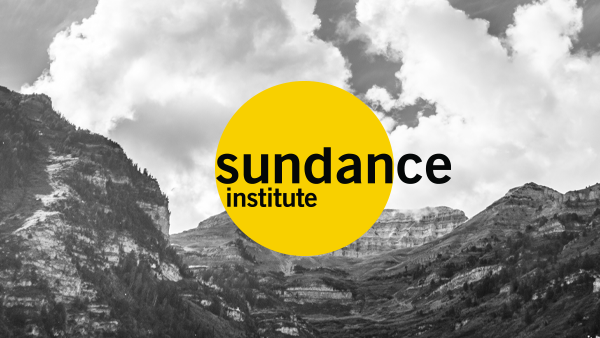Havana Marking
Eskişehir
We are on the train again now after a couple of days in Eskişehir. We were hosted by the University Anadolu and specifically the Communication Deptartment. To summarize the headline reactions in a sentence: Impressed… Energy… Excellence… Imagination… Exciting… Solidarity… Intelligence… Diligence… Great Questions!
To explain a little further… I have been to many universities now but rarely have I been so impressed by the atmosphere and energy of the students as I was in Eskişehir. The excellent cinema facility was packed with kids and teachers watching my film. That’s great, but you can feel instantly whether the students are there to score points, or to snooze instead of going to class, or to watch, really watch because they want to experience the film fully and in the case of this Communication Department, to learn from it.
Here was a room full of people eager to watch and eager to understand. Turkey has peace-keeping forces in Afghanistan, and is very diplomatically influential there and has a long running cultural exchange. The idea of balancing old and new and dealing with a society in flux is one that resonates with young Turkish people.

Film Forward with students from Anadolu University. Photo by Stacey Marbrey.
The Q&A was fantastic. People saw similarities between Setara – the star of Afghan Star – and Rosa Parks – the heroic African American woman who refused to sit in a black section of the bus in the ‘50s. We discussed ideas of society change and what Turkey is going through right now. We agreed that for other reasons too Afghan Star reminded the audience of the U.S. in the 1950s and 60s. That was the first time that black and white musicians performed on stage together as equals. Likewise black and white young people watched from the audience on the same dance floor. In this Afghan setting it was the first time in a very long time that all the ethnic groups had been equals – both on stage and in the audience and in the value of their vote. It was, I believe, one of the reasons that the show was such a huge success: a huge percentage of the population wanted to be part of that world, a world where everyone has an equal chance. It is part of the “new” Afghanistan’s constitution and general outlook.
From a filmmaker’s perspective, however, the question that made me most proud was from a young woman student filmmaker who questioned the feminist perspective of the film, or rather that she thought that there was no specific feminist perspective and how the film appealed to both genders – even though the main character was a woman. This was my aim all along! I was determined not to make a “woman’s film” that only women would watch. I was equally determined not to characterize or stereotype the “Afghan man” or “Afghan woman”. For every man demanding Setara be killed for her actions, there was a man defending her. For every religious conservative, there was a religious liberal. For every woman victim, there was a female hero. And most importantly for western audiences, for every man being aggressive to women there was a father who loved his daughters, wanting them to be proud, educated young women.
This was the reality I found in Afghanistan. Cultures and attitudes were different across the country, but it was above all a country filled with humanity and hope and a deep desire for peace, development, and education. The room agreed that the world is not so different when you come to this human level.
In the evening we attended a short film screening put on by a group of students in their final year. It was a wonderfully crazy bit of work and I admit that I didn’t understand a lot of what was happening, but I was struck in every scene at the imagination and creativity that burst from the screen. There was humour and wit, beautiful costumes and sets, sincere acting and above all, style. But there was also a communal feeling of support and good will that I loved. The student Film Club was very strong and the students in general clearly were encouraged to play a confident and active role. I think that the professors at the university – who I thank whole heartedly for their hospitality – really should be congratulated for this. Professor Nezih Orhon and Assistant Professor Serhat Serter I salute you!
Ankara
And finally on the plane out of Ankara. It was the last stop on this tour and part of the !f Festival showcase in the city. A “new” city – Ankara was made capital by Ataturk in 1923 – it felt modern, lively, and bustling. The screening was in a large shopping mall complex in a popular district. It’s true that shopping malls aren’t the traditional venues for independent film, but it felt good to screen there – definitely opening the doors for a wider audience who might not have been to a feature documentary screening before.
It should be said too that a shopping mall is not a typical venue for a diplomatic cultural summit (!) but that is what happened when it turned out that two of the audience members were in fact Ambassadors. Admittedly their bodyguards rather gave the game away, but so too did the local press who had heard that the U.S. Ambassador Ricciardone and the Afghan Ambassador Rabbani were in attendance.

Francis J. Ricciardone, U.S. Ambassador to Turkey, among audience members at Film Forward presentation. Photo by Stacey Marbrey.
It is exciting, but always a little nerve wracking when real “experts” on an issue that you cover in the film are watching. The U.S. Ambassador was last posted in Kabul, and he and his wife had loved their time there. The Afghan ambassador was born to the world of politics – his father was a very influential politician and Mujahedeen leader. They explained that Turkey was a key player in the Afghan situation, playing the role of diplomatic.
In addition to the Ambassadors there were many Turks, young and old. I was looking forward to the discussion afterwards. We discussed various filmic issues: the size of my crew, and the affect that the kidnap threat had on me and my filming. And then without realizing it, I apparently “opened the door for politics” and lots of questions about the current situation came forth.
I was asked to give my opinion on the current intervention. I explained that I could only really answer from the point of view of the Afghans I had met, but that it was important to realize that I had only been to certain parts of the country, and the opinion there was very regionally based. In my meetings with Afghans I learned that most people were pro the intervention – in that they were absolutely not in favor of the Taliban and wanted their country to develop in peace and moderation. However, if you had asked folk from areas that experienced the conflict first-hand you would get a different answer. I imagine that many there would be anti.
There was a young woman who then asked a very interesting question: “Did I think, however, that in these discussions I should also acknowledge the damage that foreign intervention – both U.S. and Soviet – had done in the past?” She was referring of course to the time period during and after the Soviet invasion of 1979. The U.S. secretly funded many mujahedeen groups to fight a proxy war. One of the groups that arose was indeed the beginnings of the Taliban. I replied that she was right: one cannot forget these things. I left it at that, but I wish now that I had had more time to think about it.
One of the reasons you mustn’t forget the past is so that you don’t make the same mistake again. There are reports coming currently from organizations like Human Rights Watch that claim a new military strategy is to arm and work with local militias and fight the Taliban together. In fact, a variety of these militias have terrible reputations and there is talk that terrible war crimes have been committed at their hands. Likewise there is talk of corruption from various international private investment firms. Every time a local population is aware of this, you turn the hearts and minds away from the new government and into the arms of who knows who. The last thing anyone needs is for the Taliban to once again have the moral upper hand.
However, I was also very glad to point out in answer to another question that there is no doubt that there is still hope and optimism in the country. It is an unpredictable situation and the corruption at all levels must be taken in hand, but there is a very young population the majority of whom want education, development, and peace.




